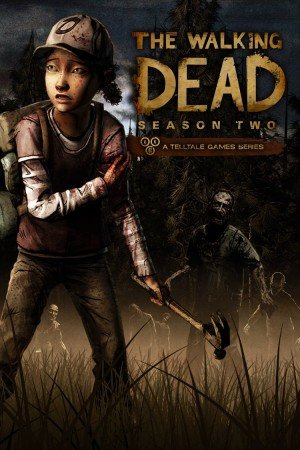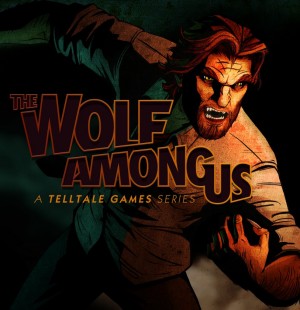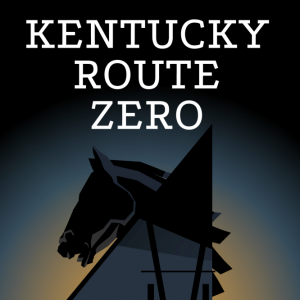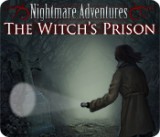Review for Valiant Hearts: The Great War page 2
One hundred years ago, a shot heard round the world kicked off the bloody conflict then known as the Great War—a war that would go on to involve more than thirty countries, kill 16 million soldiers and civilians, and wound 20 million while devastating much of Europe. These now-distant events are the focus of Valiant Hearts: The Great War, a game firmly entrenched in history but with universal themes and a message that, as violent conflicts rage in the Middle East and unrest simmers around the world, are still painfully relevant a century later.
Not usually attracted to stories about war, I was drawn to Valiant Hearts for an admittedly superficial reason: it has a dog in it. Of five playable characters, one is a scruffy Red Cross dog named Walt. I have a weird affinity for games that make me cry, and as Ubisoft’s marketing suggested, dog plus war would inevitably end in tears.
Set during 1914-1917 in Western Europe, Valiant Hearts is a side-scrolling game that looks an awful lot like a puzzle-platformer, but has all the elements of a great adventure game once you dig in. Its playable characters represent different perspectives on the global conflict, with their intertwined stories informed by real letters sent to and from the fronts. It turns out Walt is not as central as I expected; this is a game about war and the people caught up in it, that happens to have a dog in a prominent supporting role. Even so, Walt’s presence—from the clever co-op puzzles he facilitates to his unfailing loyalty to the people he befriends—has a lot to do with what makes Valiant Hearts special.
In a narrated opening sequence accompanied by stills and sparse animation, Valiant Hearts begins with the fateful assassination of Austria’s Archduke Ferdinand. As you may remember from history class, this assassination leads to unrest throughout Europe, including Germany declaring war on Russia. Because France is aligned with Russia, all Germans living in France are asked to leave. As a result, Karl, one of the game’s playable characters, is led away from his farm by soldiers, forced to leave his French wife Marie and baby Victor behind. Soon after, his father-in-law Emile meets a similar fate when he’s drafted into the French army. These two men—related by marriage, separated by nationality—will spend much of Valiant Hearts trying to find each other on the front and to make it home to their family in Saint Mihiel.
Meanwhile, Freddie, an African American, has voluntarily enlisted to fight for the French so he can seek revenge against a German commander who ruined his life (the United States didn’t get mixed up in WWI until 1917). His character is loosely based on Freddie Stowers, the only African American to receive a Medal of Honor for duty in this conflict. Fighting together and saving each other’s lives more than once, Freddie and Emile forge a friendship that lasts the duration of the war. The final playable human is Anna, a Belgian veterinarian-turned-Red Cross nurse who’s looking for her abducted father, a scientist whose expertise is in demand by the German army. Though each of these backstories drive the characters’ motivations and come into play in various ways during the game, Valiant Hearts’ story is more about the war itself and how it impacts these four people moment to moment—their attempts to survive, their triumphant victories, their harrowing near misses.
Then there’s Walt, who travels with each of them at some point. We first meet him in the company of the Germans, but when he and his handler are separated during battle, Walt and Emile quickly bond. Gameplay-wise, Walt’s best moments are as a co-op partner of sorts, assisting with puzzle solutions that require more than one set of hands, squeezing into tight spaces, or distracting enemy soldiers so his human companion can sneak past. (No matter what uniform they’re in, everyone likes to stop and pet a dog!) From a story perspective, Walt is the common thread that links these characters throughout the war.
The simple, almost allegorical storytelling keeps an otherwise heavy plotline entertaining and at times incredibly moving, telling us just what we need to know and letting our emotions fill in the blanks. Most of the big story beats are communicated via narration between scenes, with playable sequences presenting logic puzzles and other gameplay in the context of a specific battle, barracks, POW camp, or other area somehow related to the war. Spanning three years in its four chapters, with many historical events playing into its narrative, much of Valiant Hearts’ story is necessarily told through shorthand. In the game’s first playable scene, for example, Emile enters the barracks—now he’s in his underwear being sized up with all the other new recruits—he exits the barracks and now he’s in uniform—a bugle plays and the walk becomes a run as he and the other soldiers rush to the front.
Another example of narrative shorthand comes in the rebus-style exchanges that take place between the multi-national cast of characters. When two characters talk to each other, speech bubbles appear over their heads with pictograms representing their conversation (often a simple command the character must follow such as “go find this item”). Besides simplifying the localization task, this format reinforces the culture clash experienced by soldiers fighting among men with whom they can barely communicate. Appropriately, this stripped-down depiction of language also symbolizes our tenuous communication with dogs.
Valiant Hearts’ graphic novel aesthetic supports the storytelling well, showing us only what we need to see with simple hand-drawn artwork and animations that leave much to the imagination. Backgrounds are mostly muted browns, grays, and tans, with primary colors used to emphasize people and objects in the foreground (e.g. yellow gunfire, Anna’s red car). The characters are consistently designed with hair or hats that hide their eyes and jerky limbs that behave like paper cutouts hinged to their torsos. In many scenes, you’ll find yourself in a group of soldiers all wearing the same uniforms, but the game does a good job of visually differentiating the protagonists from supporting characters and also of distinguishing important supporting characters from the rest of the crowd, with features like a different helmet, big glasses, or a beard. Important historical tidbits are sometimes tucked into the artwork, too, like in one scene where Freddie leads a regiment of Black soldiers.
The artwork and storytelling may be intentionally sparse, but the soundtrack and particularly the ambient sound effects do a great job of bringing this two-dimensional world to life. The music is a mix of original, often quiet piano themes and recognizable classical music that blends perfectly with the action happening on screen. Sound effects range from collective cheers as the regiment advances to the groans of the dying, from phrases the player characters utter in their native tongues to dog sounds so spot-on my own dog was running around looking for Walt in our house.
Unlike many adventure games where you wander unsure how to proceed, Valiant Hearts keeps you moving forward most of the time. The characters walk only right and left across a 2D plane. At points you go through a door to emerge in another side-scrolling scene, but you never walk toward or away from the camera. On a gamepad, character movement is intuitively handled with the left stick, while face buttons are used to hit an opponent, knock down obstacles in the way, and pick up items. Some combo controls mimic contextual movements, such as pressing a button while simultaneously rotating the left stick to turn a gear. You learn all of this during a tutorial as Emile goes through basic training, and though there’s much more to remember than with a point-and-click control scheme, for the most part I found Valiant Hearts’ controls easy to master. (I played on PlayStation 3; keyboard controls are available on PC as well as gamepad support.)
I did consistently have trouble with digging, however, which requires holding down the PS3 controller’s Square button while pushing the left stick in the direction you want to dig. It’s not always clear when you can dig and when you can’t, so sometimes I’d try it only to have Emile flail his arms around in “hit” mode. Other times I’d try to dig by pushing left when the game wanted me to push down, and my character wouldn’t advance. This wasn’t a show-stopping problem and may well have been due to human error, but I never felt like I got the hang of it, and this pulled me out of the game whenever digging was required.
The game dictates which human character you control when, but when Walt is in the scene you can switch to him at will with the press of a button. Playing off the myth that dogs can’t see colors, the screen turns black and white when you’re in Walt’s shoes—err, paws. Though Walt’s presence is crucial to much of this game, he’s more of a sidekick than a distinct player character, with far less freedom than the humans. If he can do anything for you in the immediate area, icons appear near certain hotspots (a doorway, a lever, etc.) to indicate which button you should push to make Walt interact. He can also carry an item in his mouth, which is handy for avoiding backtracking when you’re not sure what you’ll need up ahead.
You’ll encounter three types of items in Valiant Hearts: collectibles, which are scattered around the environments and provide historical context but have no in-game use; items that can be used to solve puzzles; and projectiles (such as grenades) that can be lobbed at moving or static targets, often as part of a puzzle solution. Collectibles aside, you can only carry one item at a time. Aiming a grenade or other projectile involves pressing the right shoulder button, then aiming an arced dotted line that represents the item’s trajectory and releasing to hit your target. This is one of Valiant Hearts’ more “actiony” activities, but the difficulty level is comfortably low, and if you miss, another of the needed item is always close at hand.
The four chapters are divided into several scenes or levels, each taking place in a real location that’s described through narration and shown on a map of Western Europe as you arrive. These scenes tend to fall into one of four distinct categories of gameplay: fetch quests, battles, missions, and car chases. Adventure die-hards, if you’re thinking right about now that Valiant Hearts sounds too much like an action game, keep reading! While it is a very active game, all of the so-called action is based on rhythm, logic, pattern recognition, stealth, and QTE-style button pushing—all elements we’ve been encountering in traditional point-and-clicks for years.
The scenes I thought of as “fetch quests” are the points when Valiant Hearts feels most like a traditional adventure game. With no time pressure, the protagonist explores an area, briefly communicates with NPCs, picks up items, and uses these to solve puzzles or advance the story. The terms are often set by a commanding officer or civilian in need of help (e.g. “go find me this” or “SOS, get me out of here!”) and the scenario differs depending on who you’re controlling and the current state of the war. In one scene, Emile, a POW serving as a cook for the German army, must bring water to a thirsty Walt and gather the supplies needed to make soup. In another, Anna, working as a battlefield nurse, finds makeshift supplies to treat soldiers’ varied wounds. These little quests are often one-item tasks—a man needs a crutch and you find him something he can use as one, with no inventory combination required—but sometimes there are a few steps involved, such as trading an item for an empty flask, bringing the flask to a water source, then figuring out how to turn on the water. Besides having a bevy of useful items lying around or just out of reach, this world is also well equipped for logic puzzles, with simple gadgets controlled by levers and gears waiting for you to figure out which order to use them in. When Walt is with you, puzzles often require coordination such as directing him to stand on a platform, pulling a lever to raise the platform, then directing him to get off and pull a lever that lowers the platform so you can ride it up yourself.
Battle scenes are much more chaotic, with the enemy constantly putting your life in danger. You must dodge falling missiles based on the shadows they cast on the ground as they fall, wait for rounds of gunfire to stop before you proceed, and hide behind obstacles to keep from being spotted. Freddie carries a pair of wire cutters, which must quickly be used to cut through barbed wire so your men can advance before shooting resumes. Emile sometimes uses his giant spoon from the POW camp to dig underground, careful to avoid land mines. Your player character and a troop of comrades run forward, the group growing ever smaller as your brothers fall one by one, leaving you to advance alone. Valiant Hearts does an incredible job depicting the specifics of this war: trench warfare, droves of recruited men pushed on by their superiors, the apparent endlessness of what was once believed to be “the war to end all wars.” These sequences are more about timing and logic than quick reflexes, but with bombs falling and bullets flying, you will die often. The game immediately resets, picking up within seconds of where you fell, but the repeated death can get frustrating and sometimes detracts from the momentum the game otherwise does such a good job of building.
The scenes I thought of as missions mash up the puzzle solving and battle gameplay: you have to find a certain item or achieve a certain goal (e.g. hook up dynamite that will be used to blow up a bridge), and might have some time pressure and chance of death, but without the relentless forward march of the battle scenes. Each chapter has a varied mix of these types of gameplay, so through the 8-9 hour experience you never feel like you’re doing too much of the same thing for too long. As the game progresses, the activities you engage in become more challenging, with a noticeable ramp-up of puzzle difficulty by the end.
Finally, the car chases that occur about once per chapter are flamboyant arcade sequences that have you controlling Anna’s jalopy as it drives toward the camera, dodging obstacles that appear to the right, left, behind, and up ahead of you. Set to classical music such as “Flight of the Bumblebee” and the Can-can, these Looney Tunes-like chases are almost a dance across the road, with on-screen events corresponding beautifully to the music they’re set against. Since the obstacles are scripted, not random, these feel more like pattern puzzles than action sequences, and you can mess up a few times before the car becomes unusable and you need to start again. (Not from the beginning; like with death in battle, the chase sequence restarts at a point close to where you failed.) Though I loved the interplay between music and on-screen events, these chases do start to feel tedious, especially the mega-chase at the end of chapter 3.
Along with these four categories of gameplay, when playing as Anna you’ll occasionally encounter a first aid mini-game. This rhythm challenge requires pressing a certain button at the right time to correspond with an EKG-like heart rate read-out displayed at the top of the screen. As you carry out this task, Anna works on a wounded soldier: bandaging wounds, giving medicine, pumping the chest in CPR. When you push the buttons correctly the soldier improves; when you mess up, his heart rate becomes erratic, the read-out spattered with blood. It’s possible to get so out of sync that Anna gives up on helping the solider, but this doesn’t seem to have an impact on the story progression. In general this mini-game feels like filler; it’s not particularly challenging or exciting to win, but it’s over quickly enough not to get in the way. The exception is a very difficult iteration near the end of the game, when Anna frantically works to save one of her companions—a high-stakes moment where this otherwise forgettable mechanic finally pays off, story-wise.
Just from Valiant Hearts’ premise, setting, and brief narrative interludes between levels, I know more about WWI now than I ever learned in school. The game goes even deeper into the history with facts added to an in-game menu as the characters arrive at significant locations, live through common WWI experiences, or pick up collectibles relating to the war. Each factoid includes a photo and a paragraph-long explanation that sheds light on what life was like for the soldiers and civilians touched by this war. I was usually too engrossed to stop and read these, but for history buffs they’re always available, and even for players who ignore them initially, this content can provide new insight during a replay. In another menu, you can read diaries written by the game’s four playable humans as well as Karl’s wife / Emile’s daughter, Marie. With each character penning one or two brief entries per chapter, these aren’t a huge supplement to the main storyline, but they fill in some blanks for what happens between scenes (which are sometimes separated by gaps of several months) and, more importantly, fill us in on the increasingly dire situation in Saint Mihiel, raising the stakes for the husband and father trying to get back there.
Valiant Hearts has a hint system that I easily could have lived without. By pressing Select you can access a series of 2-3 visual hints for the immediate area. The first hint tends to show you the item you need to find next, but since it only shows a small slice of much larger side-scrolling area, just seeing the item in a picture won’t necessarily help you locate it. After waiting a minute or so, you can request another hint that shows the next step (e.g. what to do with the item)—but this won’t shed any additional light on where to find the item if you haven’t yet. Sometimes there’s a third step, also available after a minute’s wait, but that step might not come directly after the first two. I only used the hint system once in my first playthrough; I might have used it more times but when I tried there were no hints available where I was stuck. Adding insult to injury, the hint system annoyingly kept reminding me of its presence with an on-screen prompt when I was well on my way to figuring out a puzzle on my own. But it’s the thought that counts, and maybe some players will find it more useful than I did. If you want to get rid of it completely, there’s a menu option to turn it off.
It turns out I really didn’t need the hint system, anyway, because the simplicity of the side-scrolling navigation, streamlined conversations, and single-item inventory means that most puzzles are easy enough to figure out with brute force if necessary. In a pinch, Walt can provide effective clues: if you’re not sure what to do in a scene where he and a human are tag-teaming, just switch to his control to see which hotspots he can interact with. Armed with this information, I was often able to piece together an elusive puzzle solution.
Valiant Hearts’ cartoon art style and stripped-to-the-essentials storytelling may seem simplistic at a glance, but in truth this game depicts a lively world with a rich, universal story about human relationships, compassion, and the horrors of trying to survive in a war zone. Although Freddie’s revenge subplot goes off the rails in an unbelievable way, for the most part this is a focused, gripping story that underscores the strength of human connections, with the added bonus of putting a spotlight on the special bond shared between people and dogs. The side-scrolling format and active gameplay may turn off some who prefer more laid-back games, but these are essentially the same types of logic and inventory puzzles you’d find in a traditional adventure game, dressed up in different clothing.
As predicted, the ending is quite a tearjerker. The story didn’t come full circle quite how I expected—considering Walt’s constant presence, I thought the ending would have more to do with him. But like so much of Valiant Hearts’ story, the ending is grounded in a grim reality, making a strong statement about the nature of war and the plights of the people who get mixed up in it. I not only know more about the first World War now than I did before playing, I understand it better. More than just an entertaining game, Valiant Hearts: The Great War shows how interactive storytelling can be much more powerful than reading facts in a history book.






























